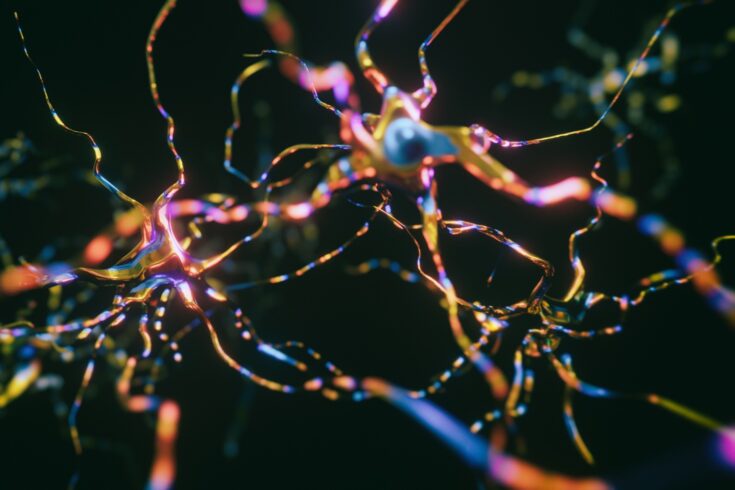The research was carried out by scientists at The Francis Crick Institute and University College London (UCL) including a Medical Research Council (MRC) Senior Clinical Fellow.
MND, also known as amyotrophic lateral sclerosis (ALS), is a rapidly progressing and devastating condition that causes paralysis by affecting motor neurons, with limited treatment options.
Until now, scientists were aware that a few proteins, especially a protein called TDP-43, were found in unexpected locations in ALS nerve cells.
But new research shows that the problem is much broader.
Mislocalisation
This ‘mislocalisation’ affects many more proteins than first thought, especially those involved in ribonucleic acid (RNA) binding.
The mislocalisation extends to mRNAs too, molecules that deliver instructions to make proteins from the DNA in the nucleus.
The researchers used stem cells from patients to create motor neurons with ALS-causing mutations in the TARDBP and VCP genes.
Analysing mRNA and protein
They then separated the two main compartments of the cell (nucleus and cytoplasm), and analysed all the mRNA and protein within each.
They found that in ALS cells, hundreds of mRNAs and proteins were mislocated compared to healthy cells.
They observed proteins and mRNAs relocating from the cell’s nucleus (the ‘control centre’) into the cytoplasm (the ‘body’ of the cell) or vice versa, hinting at potential transport issues within the cell.
Increased interactions
The researchers also saw that mislocated mRNAs and proteins interacted more with each other, compared to those in the right place.
They speculate that as the mRNAs and proteins mislocalise, they may drag each other with them, creating a domino effect.
Many intriguing possibilities
Oliver Ziff, Clinician Scientist at the Crick and UCL Hospitals NHS Foundation Trust, said:
We were surprised to see the extent of the mislocalisation, particularly for mRNAs, as this hasn’t been reported before.
The goal now is to find where this problem starts and there are many intriguing possibilities – one being a breakdown in the transport between the nucleus and cytoplasm.
This study was an exceptional team effort, and I’m immensely grateful to my colleagues, particularly co-first authors, Drs Jasmine Harley, Yiran Wang, and Jacob Neeves.
Blocking enzyme actions
Remarkably, the mislocalisation of proteins and mRNAs was partially improved with a drug called ML240, which blocks the action of the VCP enzyme.
Blocking this enzyme also led to other beneficial effects on cell function, such as reducing the level of damage to DNA.
New avenues for research
Rickie Patani, an MRC Senior Clinical Fellow and Senior Group Leader at the Crick, said:
For the patients I see, it’s devastating that there aren’t yet impactful treatments available for ALS.
This research represents a shift in our thinking about what causes ALS – it doesn’t involve abnormal movement of just a few proteins, but the abnormal localisation of hundreds of proteins and mRNAs.
This opens new avenues for research and potential therapies.
As ML240 improved the mislocalisation and other disease features in ALS, we now need to understand if this can be a tractable therapy for ALS more widely.
This is just the beginning and there is lots more to do, but our work provides some hope for effective therapies.
I am extremely grateful to the MRC for their support through my Senior Clinical Fellowship; this work would not be possible without their confidence in our research vision and longstanding commitment to MND research.
Hope of a new treatment
Dr Joanna Latimer, Head of Neurosciences and Mental Health at MRC, added:
Motor neurone disease is a devastating condition for which a cure is desperately needed.
This research provides hope as it furthers our understanding of how the disease progresses, and opens up new avenues that could lead to a treatment that will one day change the lives of people diagnosed with the disease.
Further information
The study ‘Nucleocytoplasmic mRNA redistribution accompanies RNA binding protein mislocalisation in ALS motor neurons and is restored by VCP ATPase’ is published in Neuron.

